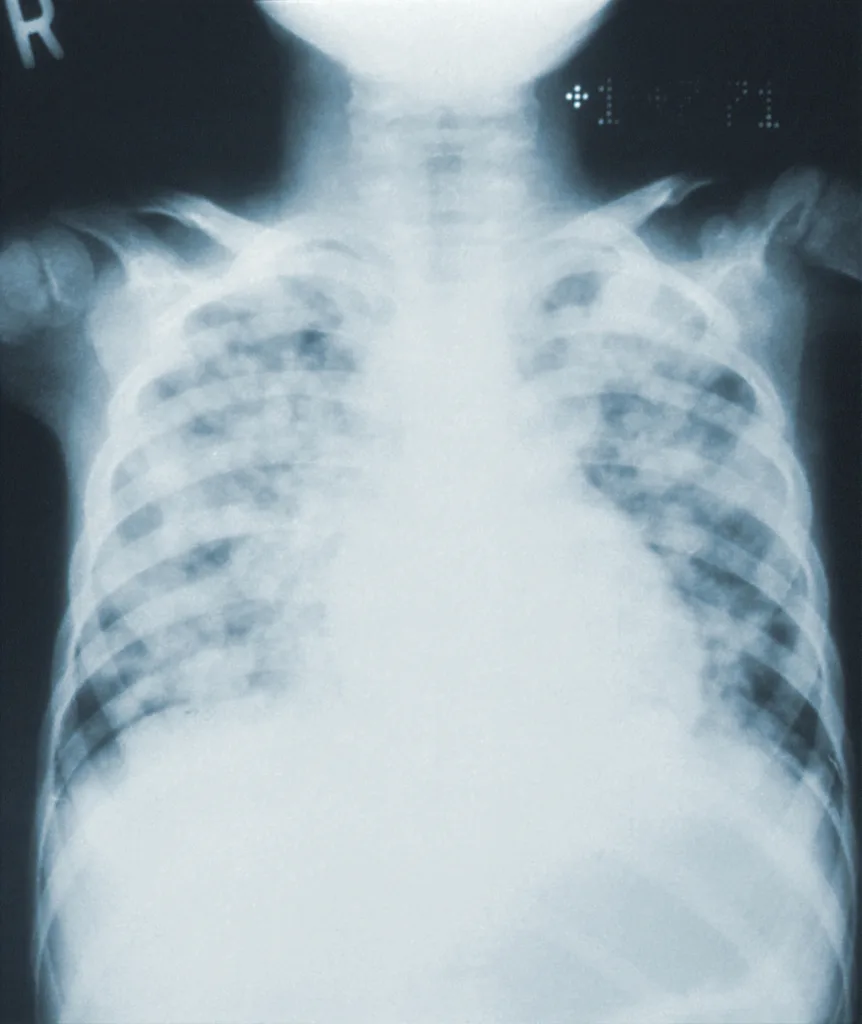Rust colored sputum is a common symptom that can indicate a variety of underlying health conditions. It is usually caused by pneumococcal bacteria in pneumonia, pulmonary embolism, lung cancer, or pulmonary tuberculosis. In this article, we will discuss the causes, symptoms, and treatment options for rust colored sputum.
1. Pneumonia: Pneumonia is a respiratory infection that can caue rust colored sputum. It is caused by pneumococcal bacteria and can also cause chest pain, fever, and difficulty breathing.
2. Pulmonary Embolism: A pulmonary embolism is a blockage in the arteries of the lungs that can cause rust colored sputum. Other symptoms of a pulmonary embolism include shortness of breath, chest pain, and a rapid heartbeat.
3. Lung Cancer: Lung cancer can cause rust colored sputum as well as other symptoms such as coughing, wheezing, and weight loss.
4. Pulmonary Tuberculosis: Pulmonary tuberculosis is a bacterial infection that can cause rust colored sputum, along with chest pain, coughing, and fatigue.
Apart from rust colored sputum, other symptoms that may occur with the underlying condition may include:
1. Chest pain or discomfort
2. Shortness of breath
3. Coughing up blood or phlegm
4. Fever and chills
5. Loss of appetite
6. Unintentional weight loss
7. Fatigue or weakness
8. Night sweats
The treatment for rust colored sputum varies depending on the underlying condition. Here are some common treatment options:
1. Pneumonia: Pneumonia is usually treated with antibiotics, rest, and plenty of fluids. In severe cases, hospitalization may be required.
2. Pulmonary Embolism: Treatment for a pulmonary embolism typically involves blood-thinning medications and sometimes surgery.
3. Lung Cancer: Treatment for lung cancer may involve surgery, chemotherapy, or radiation therapy.
4. Pulmonary Tuberculosis: Pulmonary tuberculosis is usually treated with a combination of antibiotics and rest.
Rust colored sputum is a common symptom that can indicate a variety of underlying health conditions. If you experience this symptom, it is important to seek medical attention to determine the underlying cause and receive appropriate treatment. Remember, it is always better to be safe than sorry.
What Causes Rust Colored Sputum?
Rust-colored sputum is typically caused by the presence of pneumococcal bacteria in pneumonia, pulmonary embolism, lung cancer, or pulmonary tuberculosis. The rust color is due to the presence of blood in the sputum, which can occur due to the damage to the respiratory tract caused by these conditions. In addition to rust-colored sputum, other symptoms such as cough, shortness of breath, fatigue, and chest pain may also be present depending on the underlying cause. It is important to seek medical attention if you are experiencing any of these symptoms to receive an accurate diagnosis and appropriate treatment.

What Does Rusty Phlegm Mean?
Rusty phlegm is a term used to describe a brown or rust-colored mucus that may be coughed up from the lungs. This type of phlegm can be an indication of dried blood present in the mucus. It is often associated with bacterial pneumonia or bronchitis, both of which are infections that can affect the lungs and respiratory system. Rusty phlegm may also be a sign of othr lung conditions or diseases, including tuberculosis and lung cancer. If you are experiencing rusty phlegm, it is important to seek medical attention from a healthcare professional who can properly diagnose any underlying conditions and provide appropriate treatment.
What Does Brownish Sputum Indicate?
Brownish sputum, also known as brown phlegm, is an indication of a chronic lung disease. The color of the sputum is due to the presence of blood and intense inflammation in the lungs. Cystic fibrosis and bronchiectasis are two common chronic lung diseases that result in the production of brown phlegm. These diseases cause damage to the airways, leading to the accumulation of mucus and bacteria, which can result in infections and frther inflammation. In addition to brown phlegm, individuals with chronic lung diseases may also experience coughing, wheezing, shortness of breath, and chest pain. It is important to seek medical attention if you are experiencing any of these symptoms.
What Does Orange Colored Sputum Mean?
Orange colored sputum is typically a result of the presence of blood mixed with mucus. This can occur due to a variety of reasons such as inflammation in the respiratory tract, lung infections, or other underlying medical conditions. It is important to note that the presence of orange colored sputum is not a normal occurrence and requires medical attention. In addition to seeking medical advice, it is recommended to avoid smoking or exposure to secondhand smoke, and to maintain good respiratory hygiene such as washing hands frequently and covering the mouth when coughing or sneezing.

Conclusion
Rust colored sputum can be a potential indicator of various conditions such as pneumonia, pulmonary embolism, lung cancer, or pulmonary tuberculosis. It is important to take note of the color and consistency of your phlegm as it can provde clues to the underlying condition. Brown or rust-colored phlegm may also indicate the presence of bacterial pneumonia or bronchitis. Patients with chronic lung diseases such as cystic fibrosis or bronchiectasis may experience tenacious brown phlegm due to chronic inflammation and the presence of blood. If you are experiencing any abnormal symptoms or changes in your sputum, it is important to consult with your healthcare provider for proper diagnosis and treatment.
